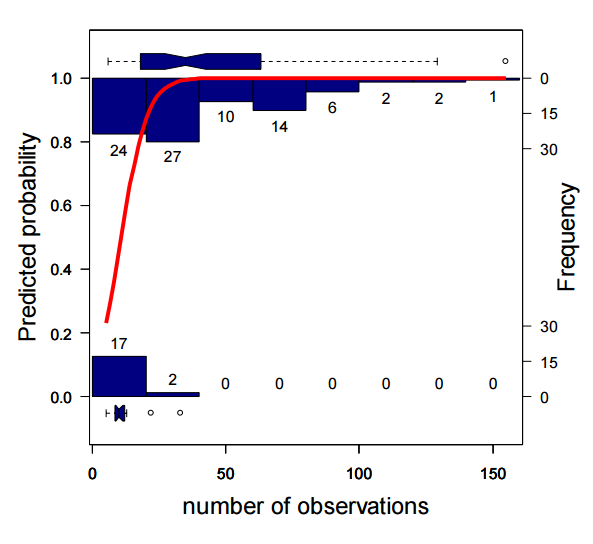—
Machine learning approaches get around common obstacles to species distribution modeling (autocorrelated data, presence-only data, etc.), but are relatively recent tools for species distribution modeling. The authors promote and demonstrate the use of Support Vector Machines (SVMs) to model ecological niches, using 106 alpine plant species as a case study.
Benefits of SVM approach
1. Not based on statistical distribution (no independence requirement)
2. SVMs are a one-class approach, simplifying the classification problem (presence-only)
3. Fewer tuning parameters, and deterministic results (model will always converge to same solution given a dataset)
4. Not many observations needed (n=40). Not sure how this compares to other methods though.
5. SVMs are cross-validated
6. SVM and niche both defined as boundary in hyperspace, so using SVM is on firm conceptual ground
The authors test 3 different methods that used dimensionality reduction or variable removal. SVMs performed comparably to MaxEnt, ENFA, and other methods (they didn’t examine all methods on their data, but compared the accuracy they obtained with other published studies on different systems). SVMs without any feature reduction or variable transformations performed the best.

